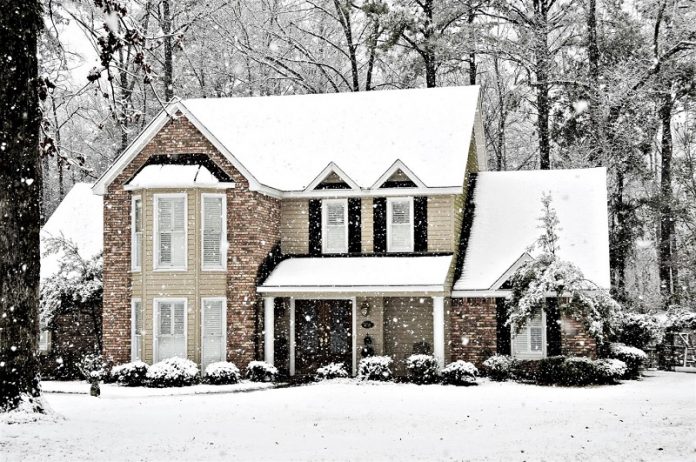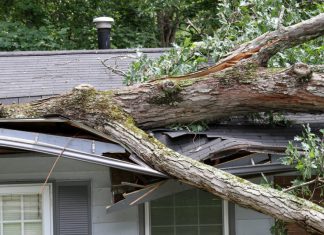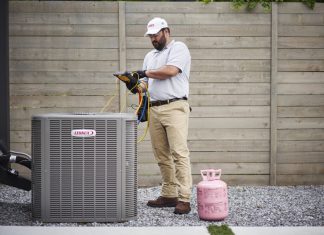This is a guest post courtesy of James Memije, the co-owner at AccuServ Heating and Air Conditioning in Toronto, Ontario, Canada.
Summer is nearly over. That means it won’t be long until the weather cools during the Autumn and starts freezing during the winter. Now’s the time to start getting your house ready for winter while it’s still warm enough, so you don’t spend a ton of money on energy bills to heat your home more than it needs.
There are several ways that you can winter-proof your home, but for the sake of most home owners let’s focus on the basics that can be handled with little expertise. Here is how you can prepare your home for winter to avoid big energy bills.
Seal All Your Windows & Doors
The first thing you should do while it’s still warm is to check all the caulking and weatherstripping in your home. Specifically, check around the frames of your windows and exterior doors, including your garage door and the door from your home to the inside of the garage (if it has one).
Caulking specifically is something that you should reapply every year. You just need to remove the old caulking and make sure the area is dry before applying a new strip. The reason why you should do it around the end of the summer is because if it’s too cold, the caulking won’t settle as effectively. For weatherstripping, how often you replace it depends on what type or material you had been using. You can do a quick inspection to see if there are any worn or broken parts with cracks and holes.
Change the Filter in Your Furnace
If your furnace is still relatively new, one quick project that will absolutely help prepare your furnace for the winter is to replace the filter. Over time, dirt, dust, and other debris until it gets increasingly blocked. The more blocked it becomes, the less efficient your furnace becomes at blowing heated air throughout your home. Furnace filters are pretty cheap, but the change in the efficiency of your furnace can be significant depending on how long it’s been since you last replaced it.
Insulate Your Windows & Garage Door
Windows and garage doors represent two of the most significant parts of your house that affect your home’s heating efficiency. They tend to be less insulated and more prone to air leaks than the rest of your home’s exterior, which means your furnace has to use more energy to keep your home heated during the winter.
Thankfully, you can buy special insulation kits for both windows and garage doors. They both work generally the same — using the materials in the kit, you apply them to the windows or garage door yourself to help provide extra insulation against the cold. Window insulation kits can be less than $10 per window kit, while garage door insulation kits get closer to $100.
Test Your Duct System
In order for your home’s heating to operate efficiently, your air duct system needs to be sealed from any air leaks. The more your ducts have leaks, the less able they are to deliver heated air throughout your home. You’ll notice potential leaks if you find certain parts of your home are more dusty, or if you have some rooms that tend to always be warmer in the summer or colder in the winter.
To find any leaks, turn on your HVAC system so it is blowing air constantly. Run your hands along the seams of the ducts and see if you feel any air — those are significant leaks you should prioritize sealing. Next, you can spot smaller leaks by holding up incense or candles steadily and seeing if the smoke flutters suddenly. You can seal the leaks using mastic resin and/or duct tape to thoroughly cover the leaks with thick layers.















